Goa
Goa: Activists demand action against erring Tattoo studios and shops in the coastal belt
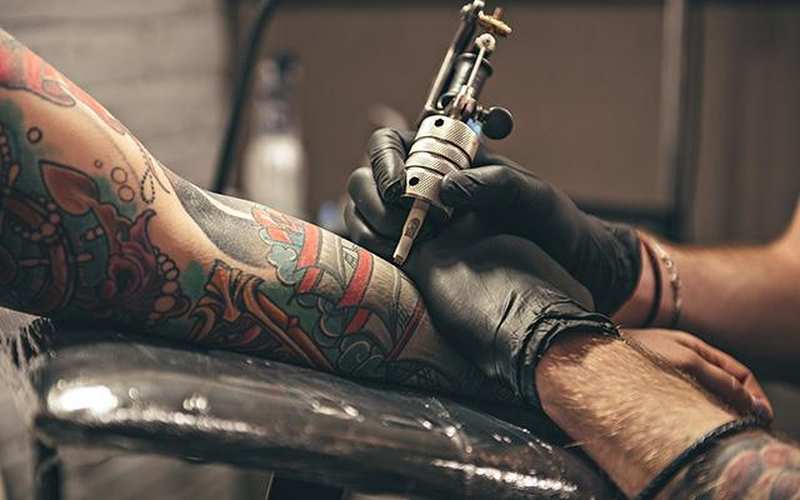
PANAJI: Several social activists from Goa have demanded stern action against erring tattoo shops that have cropped up and mushroomed in the coastal belts of North and South Goa.
In the Baga to Candolim belt alone there are more than 100 big and small tattoo shops, studios and palours, opines Roshan Fernandes, an activist from Nerul.
According to youth activist Nashville D’souza from the Calangute constituency in North Goa, it has come to his notice and knowledge that some tattoo shops use equipment which is not properly sterilized and could be contaminated. Others do not use gloves and masks while working with clients and very often equipment is not properly sterilized.
“Adequate consideration to proper hygienic norms and precaution is not taken and many tattoo artistes do not use 100 percent sterile methods and equipment or instruments. Many cases or complaints were reported on social media and clients have complained that hygienic measures were not followed at certain tattoo studios and shops,” says Nashville.
Sudesh Mayekar, village panchayat panch member and MLA candidate (from the Calangute Constituency), opines that hundreds of tattoo shops have mushroomed in the North Goa coastal belt from Morjim to Nerul.
“Most of these shops (almost 95 per cent of them) are run by outsiders from different states. Earlier, there were several shops and hawkers selling Kashmiri shawls and many of these shops have now become tattoo studios. The tattoo business in Goa is totally unregulated. Many tattoo shops do not have even a Panchayat shop license, forget about a Health department or FDA license,” Mayekar reveals.
When asked about the drugs problem, with complaints of some tattoo shops doubling up as drug pick up joints, Mayekar says, “I cannot say for a fact if any of these shops and studios function as pick-up points for drugs, because drugs can be sold even at food carts and cigarette shops. However, the fact that there are so many tattoo shops in a small area, means that either the business is very lucrative or the owners/operators are running other businesses on the side, with the tattoo business being only a front or façade. All the concerned departments – the Panchayat, Health and FDA departments must come together to regulate the tattoo studios and shops and lay down norms or best practices to ensure that Goa does not get a bad name (for lack of hygiene) in the long run,” Mayekar suggests.
Benedict D’souza, activist and former Parra ward member also feels that several tattoo shops are not following proper hygienic norms. The idea is to make the maximum money and all other issues can go to hell, D’souza says, adding that there should be periodic and random checks by the health department.
According to Nashville if proper medical procedures and hygiene is not followed, one can contract various diseases due to contaminated needles and other tattoo equipment.
“The tourism sector as a whole in Goa gets affected because of the careless acts of a few individuals. Tourists get an unpleasant experience and feel cheated. The government must propose either self-regulation or create a regulatory framework for all the tattoo studios, shops and tattoo artistes who should be required to obtain a registration (with periodic checks) to practice their trade,” Nashville opines.
Goa
Sad that an international tourist destination like Goa has to shut music at 10pm, says Bollywood film maker Reema Angel Sharma

PANAJI: Activist, social worker and film maker Reema Angel Sharma who was in the capital city Panaji recently said that she was deeply saddened and disappointed that an international tourist destination like Goa shuts down music in restaurants, pubs and beach shacks at 10 pm.
“I know that there is a High Court order. Noise pollution is a major issue. But some solution must be worked out. Since the heat is unbearable during the day, do you expect tourists to venture out in the hot weather during day time? The only pleasant hours are from 7 pm to midnight, when it is not hot and unbearable and if music shows, events and weddings have to shut down their music and sound by 10 pm, it is a very sorry state of affairs,” Reema said.
“It is sad that the Goa government and the government at the centre have not taken the issue seriously. Tourists who come to Goa for a holiday during the summer months want their money’s worth. They are not going to just stay indoors and watch Tv. Dining out or partying can be only done between 9 to 12 midnight and an international tourist destination must ensure this,” Reema stated.
Reema had recently returned from Rafah (Gaza Strip) weeks earlier before Israel took over the border crossing and also recounted her horrific experience and the stress and strain that even international humanitarian workers and medics are forced to face daily with the threat of death looming large as the Israel-Hamas war continues.
The 32-year-old was part of an international charity-powered group of volunteers providing medical and humanitarian aid to the people of Rafah – the city presently under military control by the Israeli army. The mission of their group of about 20 to 25 volunteers from different nations, including doctors and paramedics, was to provide food and administer medicines to the sick and dying.
Reema was in Rafah for a few weeks with the aid team. “I joined the international aid group because I wanted to help people in distress. There was no pay, but we were provided food. We lived in tents or wherever we could find accommodation – in hospitals and closed schools or places of worship. The invasion by Israel caused immense hardship to the poor, elderly and those in need of medical treatment. There are hundreds, if not thousands of people who are going without food for days, surviving on a little water and whatever bread or biscuits are available. The fear of getting killed with crashing rockets, collapsing structures and exploding bombs is ever present and the horrendous reality that a person who was alive and well just a few minutes earlier, becomes merely a number (among the dead) within hours is something that people have come to accept,” she said.
Goa
Goa Congress must get rid of ‘grandfathers’, promote youth: Shreha Dhargalkar
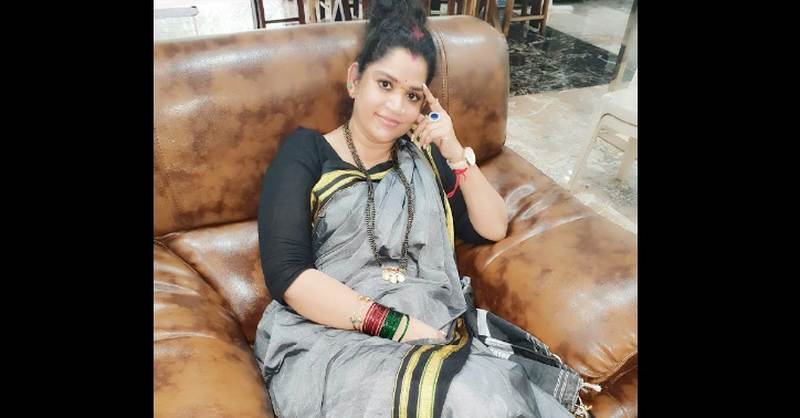
MARGAO: You can love her or hate her, but you cannot ignore her. Goan social worker and women’s rights activist Shreha Dhargalkar is the woman about town, always involved in things that concern Goa.
She recently helped a poor family from Verna, whose dwelling was demolished by the authorities to get a plot of land from the government quota to construct a house. Just not that, she also met the Speaker of the Goa Assembly, Ramesh Tawadkar and implored him to help the family get some donations to build their house.
With the Lok Sabha elections less than two months away, Shreha shares her views on the situation in the Grand Old Party – the Goa unit of the Congress.
Speaking to this reporter, Shreha opines that the main problem in the Goa unit of the Indian National Congress (INC) is the interference of ‘grandfathers’ even though should have long been retired and even if they may not be officially on any committee.
“I don’t want to take names, but I know so many good, hard-working Congressmen and women. They want to work and come up the political ladder, but they are being held down by ‘grandfathers’ who won’t retire from active politics. 20 or 30 years ago, the Congress (in Goa and the rest of India) had a lot of young blood, now the situation has changed. In every state there are multiple ex-CMs or ‘former’ Union Ministers. This is not only concerning Goa. The ex-CMs within the Congress fold will not let others go up. They will either promote their own kids or try to hang on to power at all costs. We see the same thing happening in South Goa and to an extent even in North Goa,” Shreha explained, adding that there are many capable workers who can do wonders, but the ‘grandfathers’ just won’t allow them.
“The other problem is that the ‘grandfathers’ are the ones who have money and the youngsters in the party – barring a couple of rich kids, are mostly broke. The freshers have to depend on the ‘grandfathers’ for funding for political activities and are kept under lock and key by their ‘financers’. As a result, even those who want to work are held down due to lack of funds and financial support,” Shreha claims.
Goa
Activist Ularico Rodrigues slams authorities for discharge of chemicals in Curti canal, after dead fish found floating in the water
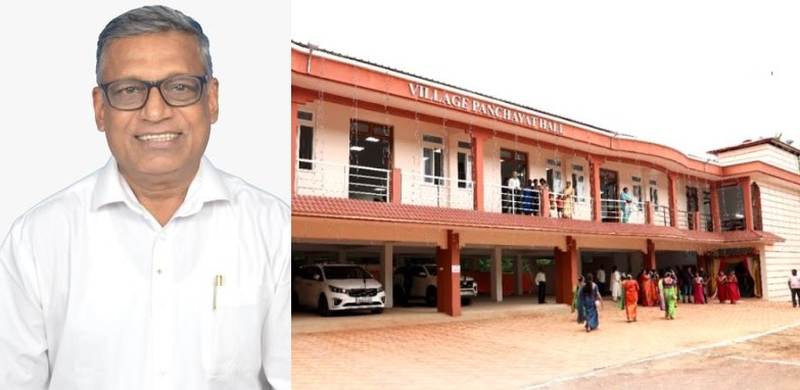
PONDA: Goan social activist and Lion Ularico Rodrigues slammed the local authorities at the Panchayat level for their indifference toward the discharge of polluting chemicals and effluents by a factory in Bethora (and other factories at large).
This problem has been going on for several years now and the water in the fresh water canal at Curti-Ponda gets polluted due to seepage from the drains and soak pits in the locality as well as the other factories in the Bethora Industrial Estate area who are the main culprits of the soil and water pollution in the area Bethoda-Curti-Ponda belt.
“The concerned factory is a habitual offender and has been pulled up time and again after complaints by locals, but no strong action was taken by the Panchayat or the Goa State Pollution Control Board (GSPCB). This is primarily due to rampant corruption in the Bethoda Panchayat,” said Ularico.
On Thursday morning several dead fish were found floating in the canal, sparking resentment and outrage among locals. According to reports, release of chemicals by the factory into a nullah which connects to the canal the night before was responsible for the dead fish.
According to Ularico, the factories in the Bethora Panchayat area are known for flouting pollution norms and regularly release their waste either in the open or into nullahs, which eventually connect to other water bodies including the Curti canal.
This recurring issue of fish fatalities due to chemical and other sewage discharge into the drains and nullahs has left the local community demanding strict, decisive action from the Panchayat and government against polluting factories. Bribes are paid to Panchayat officials to look the other way, Ularico alleged, adding that the factories could not function with such impunity in spite of several incidents of illegal chemical discharge into the drainage system and even storm water drains.
Such incidents of chemical discharge from factories in the Bethora Panchayat area have been reported multiple times in the past. Despite repeated complaints from locals, no preventative and corrective steps were taken, leading to yet another fish kill in the stream on Thursday.
The nullah flowing from Betora to Bandora Panchayat area, is suspected to have caused the widespread death of fish due to hazardous chemical release which ended up in the Curti canal.
Goa
Goa ALERT: Blue super moon on Aug 30-31 can affect tides, flood beaches
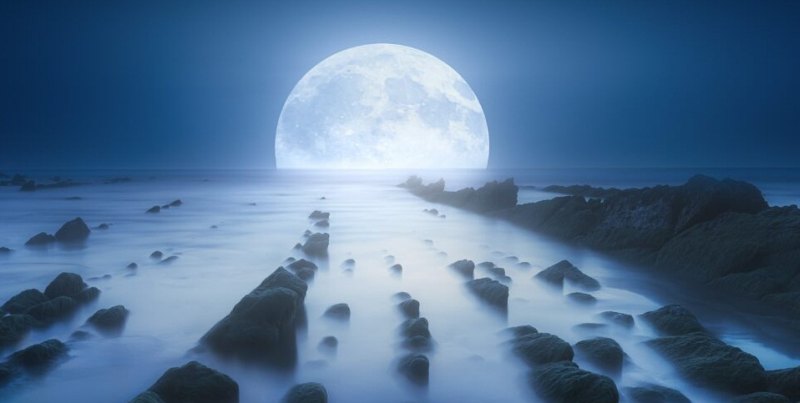
PANAJI: According to astronomers and earth scientists, on the night of August 30, 2023, the biggest and brightest full moon of the year – the “blue super moon” – will make its glorious appearance in the night sky.
The term “blue super moon” is not just a poetic label or a term found in fictional literature; it captures a rare convergence of three distinct lunar phenomena.
As explained by Gordon Johnston from NASA’s Solar System Exploration, the upcoming full moon is a merger of a supermoon and a blue moon that is in alignment with the Hindu festival Rakhi Purnima or Raksha Bandhan.
As far as Goa is concerned, the Blue Super moon or Super moon which is also a Blue Moon, will largely affect tides and a super high tide or higher-than-usual tide is very likely that could flood most beaches in Goa, with water entering the beach shacks if any.
A similar phenomenon was witnessed a few years ago, when several shacks on the beaches were severally affected by the rising waters – in some places the sea water level rose more than two meters above normal (normal high tide).
Saturn will dance with the super moon
On August 30th, as the Earth-based longitude shows the moon in perfect opposition to the Sun, it will light up the night at 9:36 PM EDT.
The ringed planet Saturn, a few days from its brightest stance for the year, will gracefully accompany our rare blue super moon, astronomers predicted.
Observers can look for Saturn five degrees to the upper right of the Moon as evening twilight ceases. The duo will then appear to dance, with Saturn swinging clockwise around the Moon throughout the evening, according to NASA.
What makes it super?
But why is this moon termed “super”? The super moon phenomenon refers to the moon’s closeness to Earth during its full phase, making it appear more substantial and brighter.
Various publications have different criteria for designating a moon as “super,” but both of August 2023’s full moons meet these requirements.
Second full moon of the month
Diving into the “blue” of the blue super moon, it’s not about the color. Instead, it references this being the second full moon for the month of August.
This terminology can be traced back to a 1946 Sky & Telescope magazine definition. Intriguingly, the more aged definition from the 1500s designated the third full moon of a four-moon season as the Blue Moon. By that criteria, the blue status would belong to the full moon of August 2024.
Goa
Long-forgotten gold treasure could be buried at several-century-old temple sites in Goa
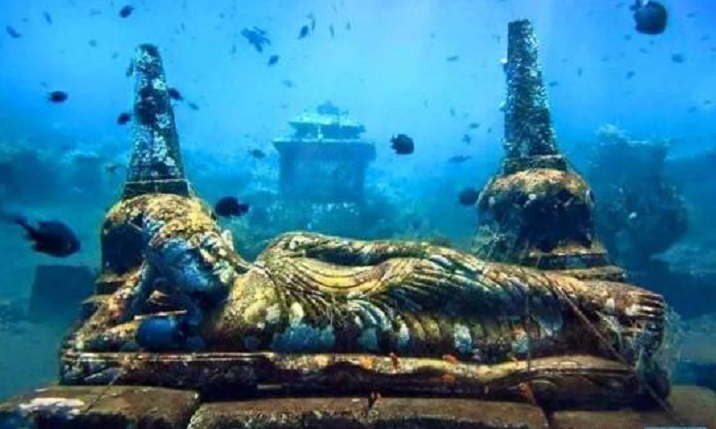
NAEW DELHI: While Goa has at least three submerged temples, two of which are undocumented and not well-known among locals, the third one is familiar, says filmmaker Maneesh F Singh who is an authority on submerged relics in India. Other land-based, long-forgotten temple ruin sites in Goa could have buried gold and other treasure or antique artifacts, he predicts.
According to Maneesh F Singh, who has directed a crossover film on the subject, there are several long-forgotten temple ruins which are more than 5-6 (or more) centuries old and not documented at all.
The remains of an ancient temple of Shree Ganesh at Kurdi, which are known and visited by hundreds of visitors during summer features in his film. The other two temples, which are also over 150-200-years old are not even known to locals, claims Singh, who has extensively researched the subject.
Kurdi is a village near Ponda that lies submerged in water round the year. The entire village was evacuated when the Selaulim dam project covered huge tracts of land under water about 30 years ago.
While the villagers were rehabilitated, the temple remained with its idols and every summer when the water abates and dries up, the village surfaces for about 20 days, only to be inundated under water again as soon as the monsoons set in.
Original inhabitants (or their descendents) of the village who visit the remains of what was once their home, once stumbled on the idol of Lord Ganpati during one of their annual visits to the site during summer when the village resurfaced.
“More explorations and searching led the people to the relics of the ancient temple. The idol of the deity is made of stone, and probably dates back to over a century. Some claim it could be more than two hundred years old, says Singh. Nobody knew a temple existed in this village, not even the old timers who resided here. This suggests that the Shree Ganesh temple may have been razed or disappeared at least over a century ago,” adds Singh.
There were no records of this ancient submerged Hindu temple with the state department of archaeology or any other government bodies (at least till a few years ago) – one of the main reasons why it has not got any official status as a heritage location.
Reports claim the ruins went unnoticed by the Kurdi villagers as the site was covered by mounds of earth, debris and thick vegetation that sprouts up as the water abates and dries up.
The submergence of the village, and the subsequent relocation of the villagers, led to the ancient temple ruins slipping into oblivion, before a chance discovery brought it into focus. Now Singh claims there could be buried gold or other treasure in the vicinity.
The ruins of the ancient Shree Ganesh temple are located less than 500m from the ruins of the relatively well-known ancient temple of Shree Someshwar, the presiding deity of Kurdi.
The relics of the Someshwar temple, along with the vestiges of the entire submerged village, resurface during the summer months of April and May, before going under water once the monsoon sets in.
The villagers of Kurdi and Selaulim, over 3,000 in number, were displaced after their villages came under the reservoir submergence of the Selaulim irrigation project.
The Selaulim irrigation project including a dam were planned in 1965. Work began on the dam in 1977 and the villagers left their hearths and homes to be rehabilitated in the remote Valkini and Vaddem villages.
In addition to the Ganesh temple at Kurdi, there are two more lesser-known submerged temples in Goa, one of them being at Betul and the other one on the banks of the Netravali river, Singh says.
The remains of the original century-old temple is in disarray and underwater, while another temple on the banks of the river, which was built later on, also gets submerged during the monsoon. While he is not sure of the exact location, Singh is ready to bet his last penny that the buried treasure does exist some where in the ruins.
Goa
Light rain expected in Goa over the weekend, no change in temperature

PANAJI: While Goa will continue to experience a warm summer, with average daytime temperatures likely to be slightly above normal, a slight drizzle could be expected over Friday and Saturday this weekend.
According to a weather forecast, under the influence of a trough formation and wind discontinuity along with the possible moisture incursion at the lower-mid levels, the India meteorological department (IMD) has forecast light rain and thunderstorms at isolated places over both districts of Goa on April 28. Slight or insignificant drizzle can be expected over the entire weekend, a private weather forecaster has said.
The volume of rain could be mostly insignificant and unlikely to have any further impact on prevailing overall weather conditions, the report said.
Goa
Chemically ripened fruit sold in Margao, Vasco markets, complain local farmers: Goa FDA seizes huge quantity of chemically ripened fruit
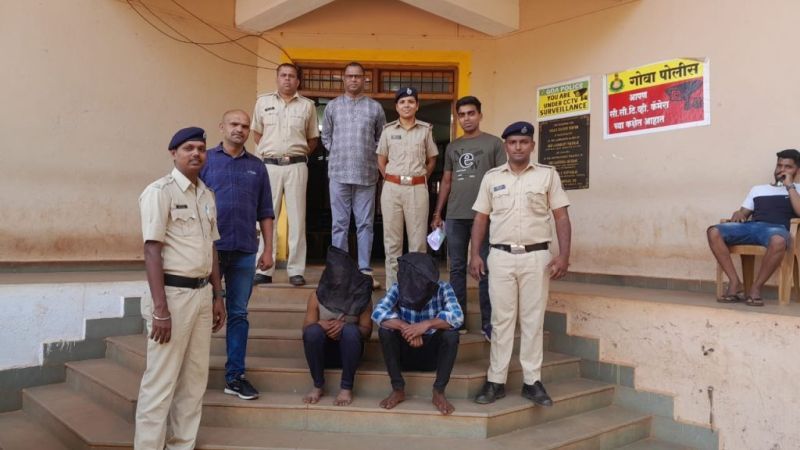
MARGAO, GOA: Even as the Goa FDA – in a swift operation – seized a huge quantity of chemically ripened bananas from the Mapusa market yesterday, local Goan farmers in South Goa have alleged that chemically ripened fruit are blatantly brought in from outside Goa and sold in the major markets in the South, including Margao, Vasco and Ponda.
Local farmers and fruit growers as well as residents of the concerned localities are up in arms, claiming that they are facing huge losses as the chemically ripened fruit are brought into the coastal state by the truckloads and are much cheaper than the local produce.
Most local fruit produce is organic and naturally ripened but more expensive, said Roy Dsouza from Tivim who has a mini papaya farm.
Several varieties of local Goan fruit produce are more expensive than that brought in from other States in bulk quantities. These fruits are ripened using chemicals and then sold at cheaper rates in the major markets in Goa.
Meanwhile, according to a media note, the Goa State FDA conducted a surveillance and inspection drive yesterday, at the Mapusa sub-yard to check for artificial and chemical ripening of fruits, which is illegal. During the checks a wholesale fruit shop was found to have stocked chemically ripened bananas weighing about 800 kgs. It is not known if the bananas were locally produced or brought in from another state and the names of the accused were not made known by the FDA.
Chemical liquid ethaphone which was illegally used for the ripening of the bananas was also seized from the shop and the banana stock sprayed with chemicals was destroyed with the help of the Chief officer of Mapusa Municipality, the government media note said. Sources said consumption of such artificially ripened fruits could be dangerous, particularly affecting and harming children more severely. More details are awaited as it is not known at the time of filing this report, regarding the registration of a case and the other legal action taken against the accused.
The artificially and illegally ripened banana stock destroyed by the FDA was worth approximately Rs. 65000/- in the wholesale market. In addition to the bananas, other fruit samples were drawn from the area and sent to the food laboratory for further testing, the FDA said.
FDA sources revealed such raids and surveillance drives would be undertaken all over Goa to detect artificial ripening of fruits during the season.
Residents from different parts of Goa have complained of chemically ripened mangoes brought in from other States which are being sold in Goa. FDA officials when asked said they are looking into complaints regarding chemically ripened mangoes sold in Goa by unscrupulous vendors and action will be taken in the matter.
Goa
Goan politician Trajano D’mello aka amcho Trojan bab goes “national”
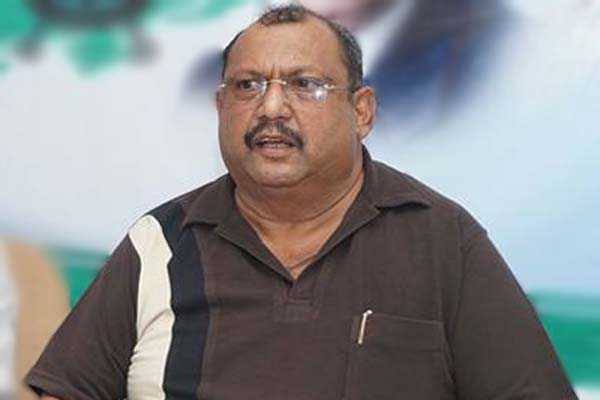
PANAJI: Senior Goan politician from North Goa who has seen it all and done it all (in the political sphere of course) Trajano D’mello or amcho Trojan bab – as he is referred to by some journalists in the tourist state, has gone “national”. Trajano who is with the Goa unit of the Trinamool Congress (TMC) and has been its Goa spokesperson for several months, was promoted and redesignated as the party’s National Spokesperson. It’s an achievement for Trojan bab and irrespective of which political party one may belong to, old-world Goans, who still have the spirit of genuine Goemkarpoon in them, would have felt at the least a tinge of joy for Trojan – at his elevation in the political hierarchy. We at IndyaTv are definitely happy that he is going up the political ladder and would like to wish Trajano “success and all the best”.
What makes politics and politicians in Goa different from anywhere else in India. For starters, there is an unwritten code that is strictly followed and adhered to and it goes something like this – no matter how bitterly or aggressively or loudly Goan politicians may argue and fight on the floor of the Assembly, at political rallies or during election campaigning, the verbal attacks and fights stay only on the battlefield. Goan politicians from all parties, do not take their fights to each other’s homes. Wives, parents and families and relatives (not in politics) are not targeted or attacked and definitely kids and children are left alone, never to be even considered or brought up, even in otherwise vitriolic verbal assaults.
This “Goan tradition” has been respected by even local goondas and thugs. A well-known Goan singer, tiatrist and businessman from North Goa once told me an anecdote from years ago, when a prominent Goan activist-lawyer was allegedly attacked by some goons, reportedly owing allegiance to a local strongman and politician. I do not know if this story is true, but apparently, very strict instructions were given to the attacking party that no children and women were to be harmed or even touched, even by mistake.
After a major verbal dual either in the Assembly or at a rally, Goan politicians from rival parties are known to sit together at a local restaurant or eatery and break bread – probably the famed Goan ros omlette with pao or poi or the mirchi and sukki bhaji with pao and chai. The late BJP leader Manohar Parrikar (former defence Minister) when he was the CM of Goa was known for suddenly dropping by the office of the Leader of the Opposition in the Assembly Complex and calling for chai.
Goan politicians are often seen interacting politely with their political rivals at religious festivals, fests, zatras and other traditional events. This is the spirit of Goemkarpoon and with this spirit in our hearts, we would like to whisper a little prayer for Trajano – for good health and good fortune in the days and years to come.
























